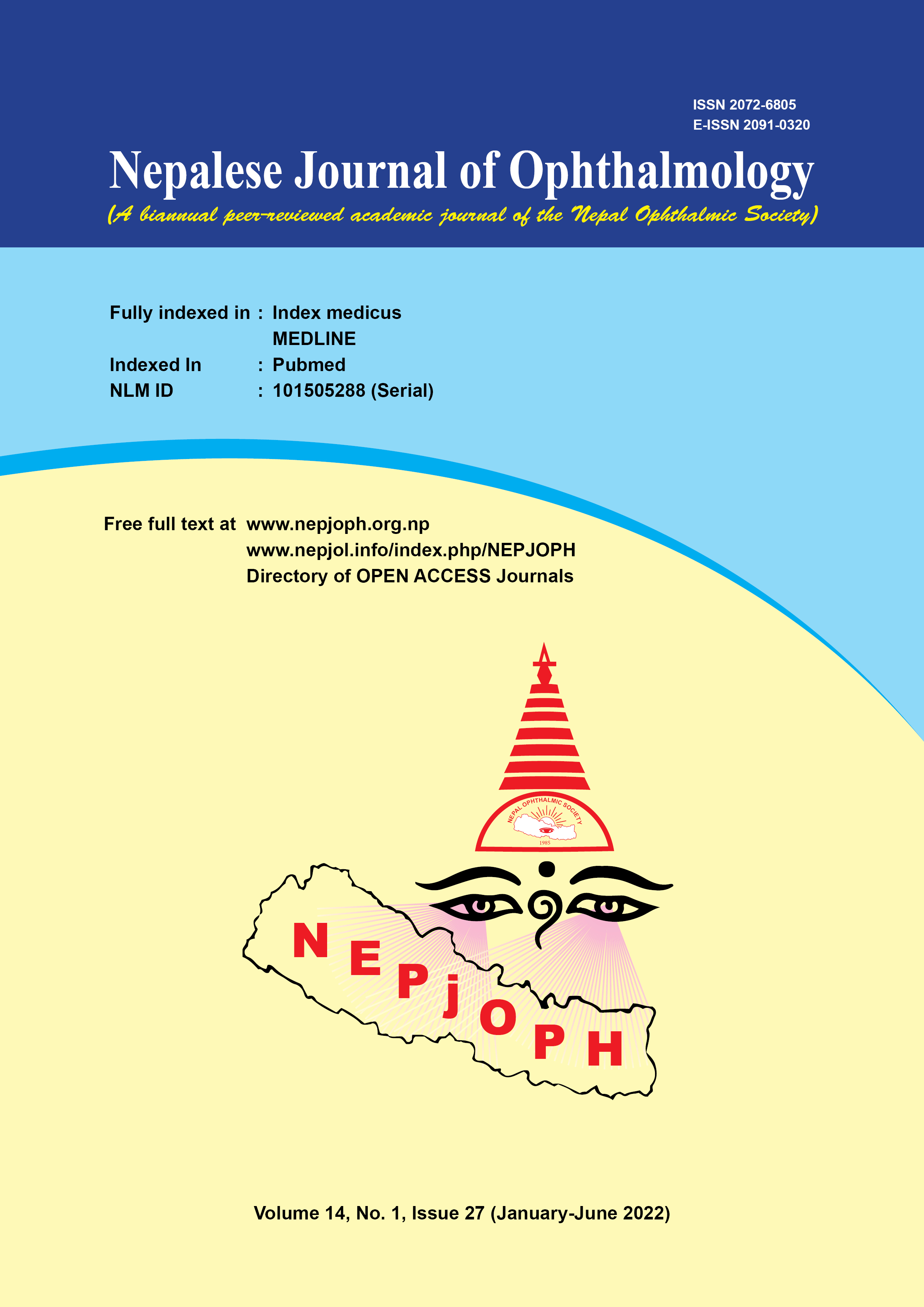Causes and Managements of Early-Onset Ocular Hypertension Following Pars Plana Vitrectomy with Silicone Oil for Retinal Detachment and Exploration of Trabeculectomy as a Viable Alternative Management: A Pilot Study
DOI:
https://doi.org/10.3126/nepjoph.v14i1.35475Keywords:
Intraocular pressure, Glaucoma, Silicone oil, TrabeculectomyAbstract
Introduction: This study aims to study a relatively unexplored topic about the causes and managements of early-onset ocular hypertension (OHTN) following the pars plana vitrectomy with silicone oil (PPV with SO) procedure for retinal detachment. Additionally, to explore the outcome of trabeculectomy in managing such patients.
Materials and methods: This is a retrospective exploratory pilot study. We studied 23 patients who underwent the procedure then subsequently developed ocular hypertension within a month of the procedure. The probable causes for their early-onset ocular hypertension were identified and addressed with medicine, peripheral iridotomy (PI), complete or partial silicone removal. Trabeculoplasty was done in irretractable causes. This study aimed to evaluate the causes of early onset ocular hypertension after pars plana vitrectomy with silicone oil and explore the outcome of different managements including trabeculectomy.
Results: Inflammation (n=11, 47.8%) was the most common cause of early-onset ocular hypertension. Other causes were overfilling/spilling of silicone oil in anterior chamber (n=5, 21.7%), pupillary block (n=4, 17.4%) and angle-recession glaucoma (n=2, 8.69%). Majority of the cases responded to intraocular pressure (IOP) lowering medications (n=11). Three eyes with persistently high intraocular pressure underwent trabeculectomy after which the intraocular pressure was controlled.
Conclusion: Even though prior studies have reported that trabeculectomy does not address late-onset ocular hypertension, our study shows that the procedure might be helpful in early-onset ocular hypertension. This is probably because at the time of presentation for early-onset ocular hypertension, silicone has not emulsified, which will not be the case in late-onset ocular hypertension. If a large study also shows that trabeculectomy can correct early-onset ocular hypertension, this information can guide the practices of ophthalmologists whose patients cannot afford expensive glaucoma drainage devices.
Downloads
Downloads
Published
How to Cite
Issue
Section
License
Copyright (c) 2022 Nepalese Journal of Ophthalmology

This work is licensed under a Creative Commons Attribution-NonCommercial-NoDerivatives 4.0 International License.
This license enables reusers to copy and distribute the material in any medium or format in unadapted form only, for noncommercial purposes only, and only so long as attribution is given to the creator.




